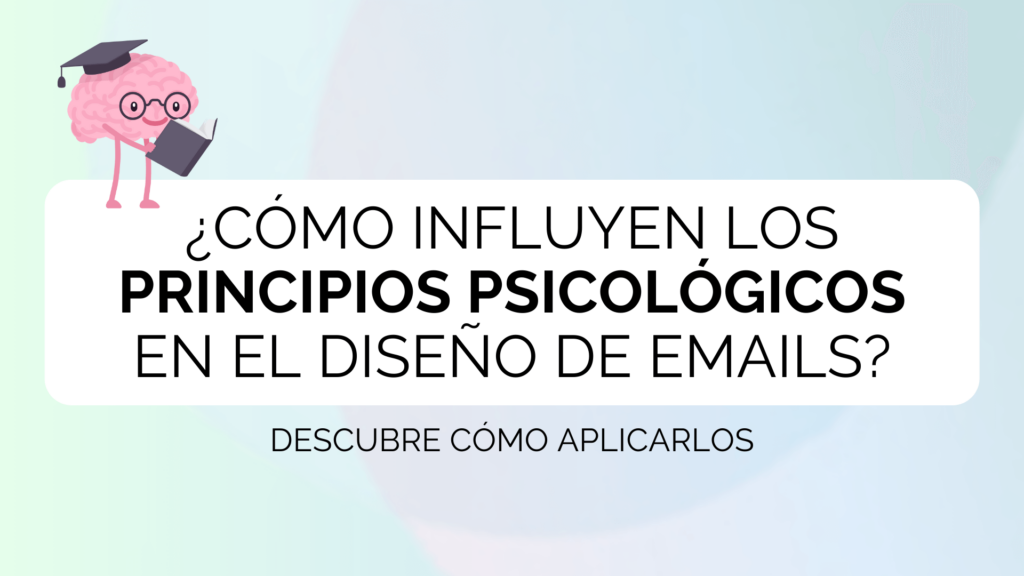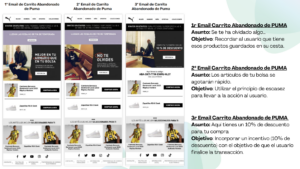How do psychological principles influence email design?

On previous occasions on this blog, we've talked about the importance of perfecting your email marketing sends However, it is not only a question of design and content, but also of understanding how your audience thinks and acts.
Behind every click, every open and every conversion, there are psychological principles that influence users' decisions.. So understanding these principles and applying them to your email design can improve your strategy, helping you to create messages that are more effective, personalised and persuasive.
In this post, we will see how to apply psychological techniques in email design to increase the effectiveness of campaigns. In addition, we will also learn different ways to capture attention, encourage action and improve conversions through tactics that optimise the visual and emotional impact of messages.
1. Scarcity Principle
The scarcity principle is based on the perception that limited resources are more desirable. When people sense that something is about to run out, they tend to act faster to make sure they do not lose it.
In fact, we could say that the effectiveness of this principle is due to the fact that people associate that the most valuable things are the most difficult to obtain.
Examples of use:
- - Use phrases such as "Limited availability" or "Offer valid until tomorrow" in your CTAs.
- - Includes timers to show the countdown of an active promotion.
2. Zeigarink effect
The effect Zeigarnikdiscovered by the psychologist Bluma Zeigarnikis based on the human tendency to remember incomplete tasks better than completed ones. This phenomenon occurs because unfinished tasks generate a kind of "psychological tension" that drives us to seek their resolution.
In other words, our mind is trapped in a state of expectation when something is not completed, which reinforces the desire to close that open cycle.
For example, when a user abandons their shopping cart without completing the process, their brain keeps a kind of implicit reminder about that pending action. This principle becomes a powerful tool for designing strategies that motivate users to return and complete the task.
Examples of use:
- - Send reminder emails about abandoned carts with a message such as "Your cart is waiting for you".
- - Design an email that notifies the user that they have completed a 70% of their profile. For example, the message could include a CTA such as: "You only have one step left to start enjoying all the benefits". In this way, the perception of incomplete progress is used to incentivise the user to complete the process.

3. Principle of Social Proof
The social proof is based on the idea that people rely on the actions of others to take decisions. This happens because, in situations of uncertainty, we tend to look to what others are doing as a way of validating our own decisions.
Thus, showing social evidence can be an effective way to build trust and increase conversions.
Examples of use:
- - Include customer reviews, testimonials or figures such as "More than 10,000 people already trust us".
- - Add user-generated content, such as photos or social media comments.
4. Immediate Reward Principle
The principle of immediate reward is based on the human tendency to seek instant gratification.. In other words, people respond best when we see that we can get a tangible benefit in the moment, without the need to wait.
This is deeply related to how the brain's reward system works: Every time we receive an immediate reward, we experience a release of dopamine, which reinforces our motivation and behaviour towards similar actions in the future..
In the context of email marketing, this principle is key to capturing the user's attention quickly and motivating them to take a specific action.. Immediate rewards can be discounts, exclusive content, priority access or any benefit that the user receives instantly when interacting with the email.
Examples of use:
- - Offer an instant discount or gift for opening the email or completing an action.
- - Use clear and direct CTAs, such as "Download your coupon now" or "Get your free gift today".
5. Hick's Law
The Hick's Law states that the time a person takes to make a decision increases with the number of available options. This principle, widely used in the design of interfaces and digital products, also applies to email design where simplicity and clarity are key to user guidance towards a specific action.
When an email includes too many links, calls to action (CTAs) or redundant information, users may feel hesitant, which often results in them not interacting with the email. Therefore, narrowing down choices not only facilitates the decision-making process, but also improves the user experience and increases conversion rates..
Examples of use:
- - Limit the number of opt-ins and CTAs in an email to one or two.
- - Design minimalist emails with a clear and direct approach.
6. Anchoring effect
The effect of anchoring is based on the tendency for people to rely on the first information we receive when evaluating options or making decisions. This principle acts as a benchmark that disproportionately influences subsequent decisions.
In the context of email marketing, this phenomenon can be exploited to guide users' perception of the value of an offer, the price of a product or the urgency of an action..
Examples of use:
- - Highlight an attractive introductory offer in the subject line or email header, such as "50% discount" or "First purchase for only €9.99".
- - Compare prices: shows the original price and the discounted price to make it easy for the user to see the savings.
Ultimately, incorporating psychological principles into your email design not only improves aesthetics, but also drives your customers' behaviour in the direction of your marketing goals. Remember that a well-designed email not only sells, but also builds lasting relationships with your audience.